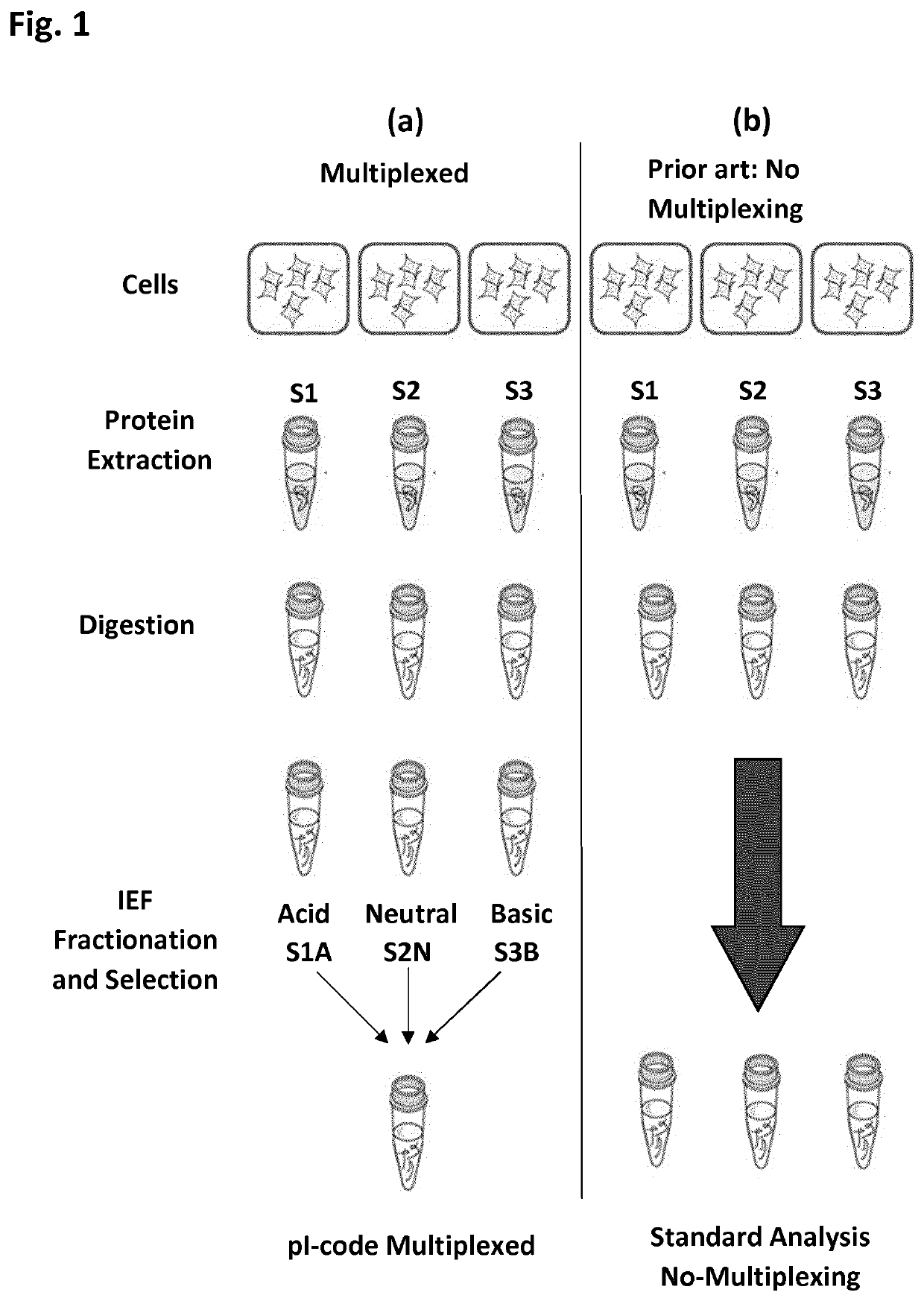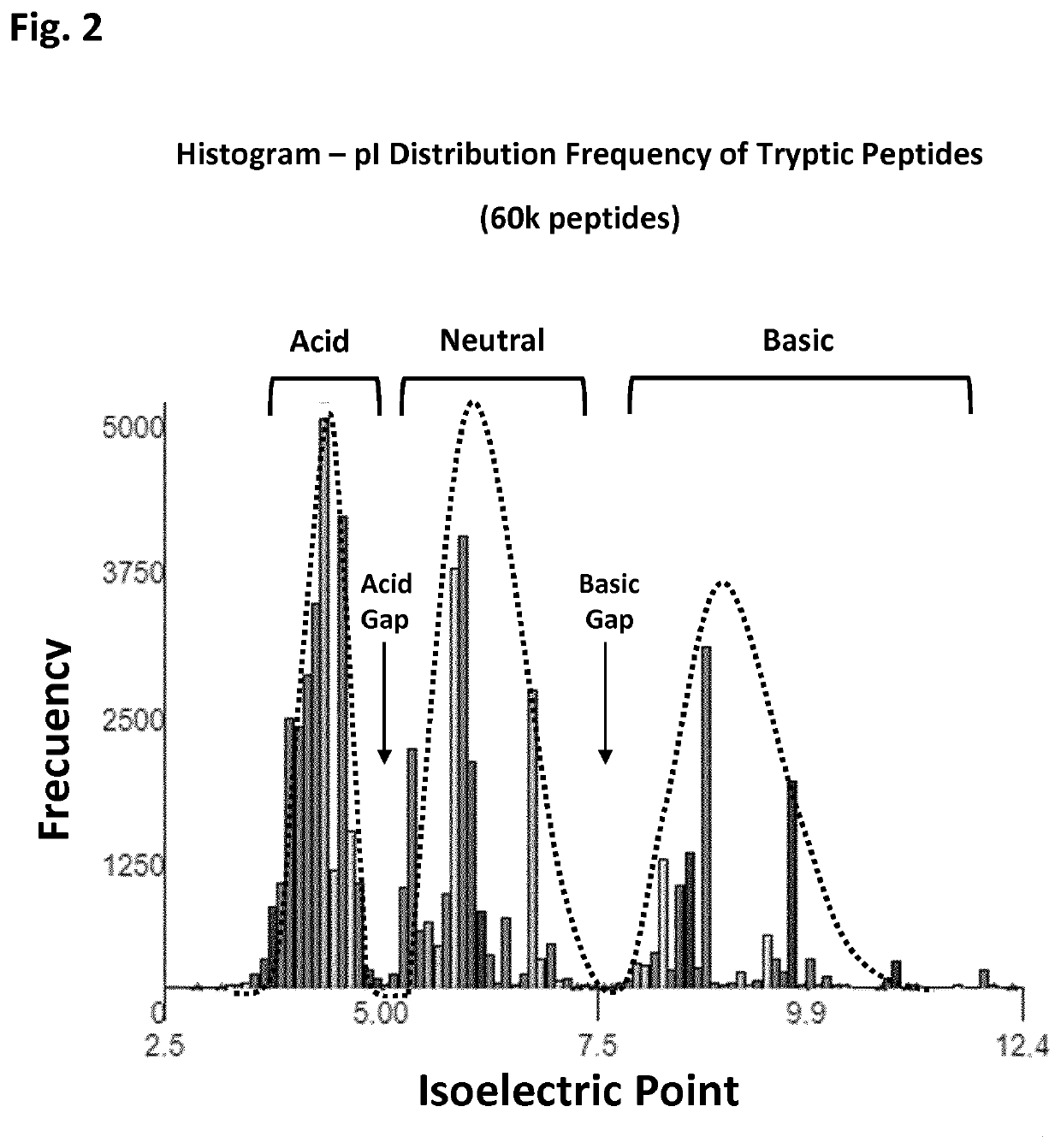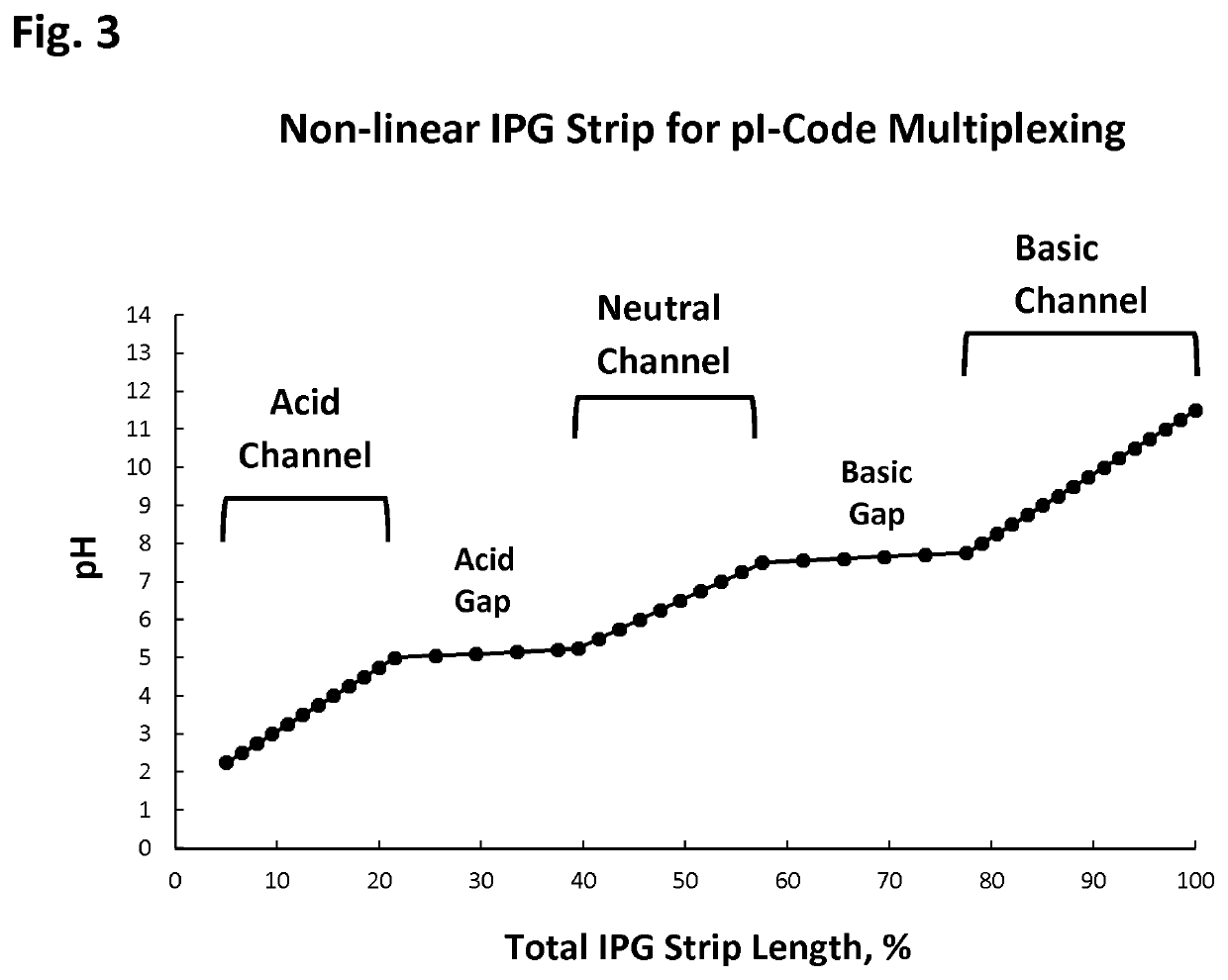Apparatus and method for multiplexed protein quantification
- Summary
- Abstract
- Description
- Claims
- Application Information
AI Technical Summary
Benefits of technology
Problems solved by technology
Method used
Image
Examples
example 1
[0083]This example uses isoelectric focusing convolution for the analysis of two samples in a single LC-MS analysis. This can be performed by the following protocol:
[0084]1. Two samples, called Sample A and Sample B, containing a mixture of proteins are separately digested with trypsin, then;
[0085]2. The resulting tryptic peptides from Sample A are separated by isoelectric focusing, then;
[0086]3. Collecting only those peptides from isoelectric point below 5. For simplicity, this sample will be called A-Acidic.
[0087]4. Perform isoelectric focusing separation of the resulting tryptic peptides from Sample B, then;
[0088]5. Collect only those peptides from isoelectric point above 5. For simplicity, this sample will be called B-Basic.
[0089]6. Mix together samples A-Acidic and B-Basic. For simplicity this sample will be called ABplexed.
[0090]7. Perform LC MS / MS analysis of ABplexed.
[0091]8. Perform database search of the LC MS / MS data (protein and peptide identification and quantification)...
example 2
[0094]This example uses isoelectric focusing convolution for the analysis of two isobaric labeled samples in a single LC-MS analysis (in this example, in total 16 samples).
[0095]1. Eight samples, each containing a mixture of proteins, are individually and separately digested with trypsin. After digestion, each digest is later labeled with a different isobaric reagent in a manner that when mixed together (or pooled), it will allow the quantification of each individual protein sample. Each labeled sample will be called Sample A1, Sample A2, Sample A3, Sample A4, Sample A5, Sample A6 Sample A7 and Sample A8, respectively.
[0096]2. Mix together (pool) samples: Sample A1, Sample A2, Sample A3, Sample A4, Sample A5, Sample A6, Sample A7 and Sample A8 into a single sample. For simplicity, this pooled sample will be called A-8plexed
[0097]3. Perform isoelectric focusing separation to the A-8plexed sample.
[0098]4. Collect only those peptides from isoelectric point below 5. For simplicity, this...
example 3
[0108]Combination of isoelectric focusing convolution and multi-enzyme convolution, allowing the analysis of 4 label free samples in a single LC-MS run.
[0109]1. One sample, called Sample A containing a mixture of proteins is digested with trypsin, then;
[0110]2. Another sample, called Sample B containing a mixture of proteins is digested with pepsin or any other proteolytic enzyme having a different and orthogonal enzymatic specificity than trypsin, then;
[0111]3. Another sample, called Sample C containing a mixture of proteins is digested with trypsin, then;
[0112]4. Another sample, called Sample D containing a mixture of proteins is digested with pepsin or any other proteolytic enzyme having a different and orthogonal enzymatic specificity than trypsin, then;
[0113]5. Mix the resulting peptides from Sample A and Sample B in a single sample. For simplicity, this sample will be called Sample AtBp.
[0114]6. Perform isoelectric focusing separation to the AtBp sample, and collect only those...
PUM
| Property | Measurement | Unit |
|---|---|---|
| Isoelectric point | aaaaa | aaaaa |
Abstract
Description
Claims
Application Information
 Login to View More
Login to View More - R&D
- Intellectual Property
- Life Sciences
- Materials
- Tech Scout
- Unparalleled Data Quality
- Higher Quality Content
- 60% Fewer Hallucinations
Browse by: Latest US Patents, China's latest patents, Technical Efficacy Thesaurus, Application Domain, Technology Topic, Popular Technical Reports.
© 2025 PatSnap. All rights reserved.Legal|Privacy policy|Modern Slavery Act Transparency Statement|Sitemap|About US| Contact US: help@patsnap.com



